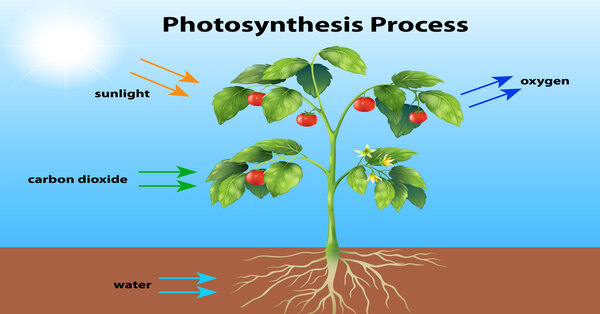Check the Photosynthesis Process Below to Know How Plants Make Food
PHOTOSYNTHESIS PROCESS – Here is the step-by-step phases of food-making in plants so they can grow and bear fruits and flowers.
Science is one of the subjects in the educational curriculum with a very wide scope. Thus, it is being taught from kindergarten to college. Undeniably, among the many Science topics, there are those that are really popular but not everyone has mastered these topics.

Aside from the laboratory equipment and their uses, another very popular topic in Science is the photosynthesis process. It is the process wherein the plants absorb light energy to convert it into chemical energy. This is also known as the process of food-making in plants.
Photosynthesis is very important in plants. Below, you can check the importance of this process as well as the phases in the so-called food-making in plants.

Photosynthesis helps plants store light energy as chemical energy and this chemical energy is used by humans and animals when they consume plants. Here is the photosynthesis process in plants:
Absorption of Light
The first step in the photosynthesis process or the food-making of plants is the absorption of light by the chlorophyll, the green pigment that is present in the leaves of plants. The chlorophylls have connections with proteins in the thylakoids sack of chloroplasts. The light that was absorbed turns into energy and it is utilized to eliminate the electrons from the water. The released electrons turns into electron donors that form oxygen. They pass to a Quinine, the major electron acceptor.
Transfer of Electron
The second phase is the transfer of the electrons to the electron acceptors. Afterwards, they are moved to the final electron acceptor which is an NADP positive. Then, the chain of electron transfer happens which results to the existence of molecules in the thylakoid membrane.
Production of ATP
After the electrons have been moved to the final acceptor, they move out from the thylakoid lumen to the stroma of the plant. This process is called the F0F1. The results lead to the production of the ATP, it is the most important energy source in the biological process of plants. This ATP production is only used during the photosynthesis process and it cannot perform without light.
Carbon Fixation
The final phase of the photosynthesis process is the Carbon Fixation. This is the phase when the former ATP and NADP lead to the production of energy. The Carbon Fixation is the only phase that is dependent on light while the previous phases are known as light reactions. This is called the Calvin Cycle.
